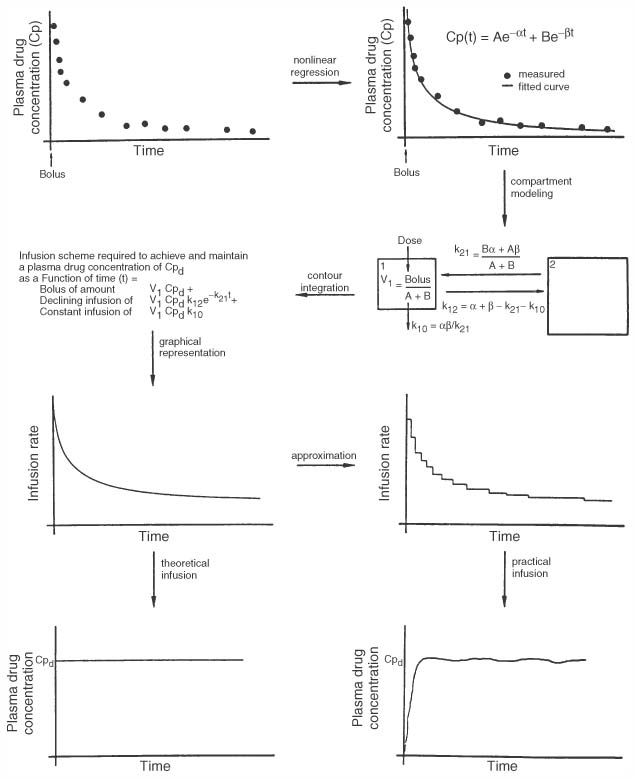 |
 |
Figure 12-4
Steps involved in a pharmacokinetic model-driven infusion.
Typically, pharmacokinetic models are derived from experiments in which plasma drug
concentrations are measured at intervals after bolus administration of the drug.
Nonlinear regression is used to fit a monoexponential, biexponential, or triexponential
curve to the resulting concentration-versus-time data. There is an algebraic relationship
between the exponential decay curves and a one-, two-, or three-compartment pharmacokinetic
model. The "BET" infusion scheme is developed and consists of a bolus,
a continuous infusion to replace drug eliminated
from the body, and an exponentially declining infusion to replace drug transferred
out of plasma to other body compartments. A BET infusion results in maintenance
of a constant specified plasma drug concentration. Practical implementation of the
BET scheme with real infusion pumps and infusion rates that change only at discrete
intervals results in a plasma drug concentration profile that approximates the profile
resulting from a BET infusion.

 |
